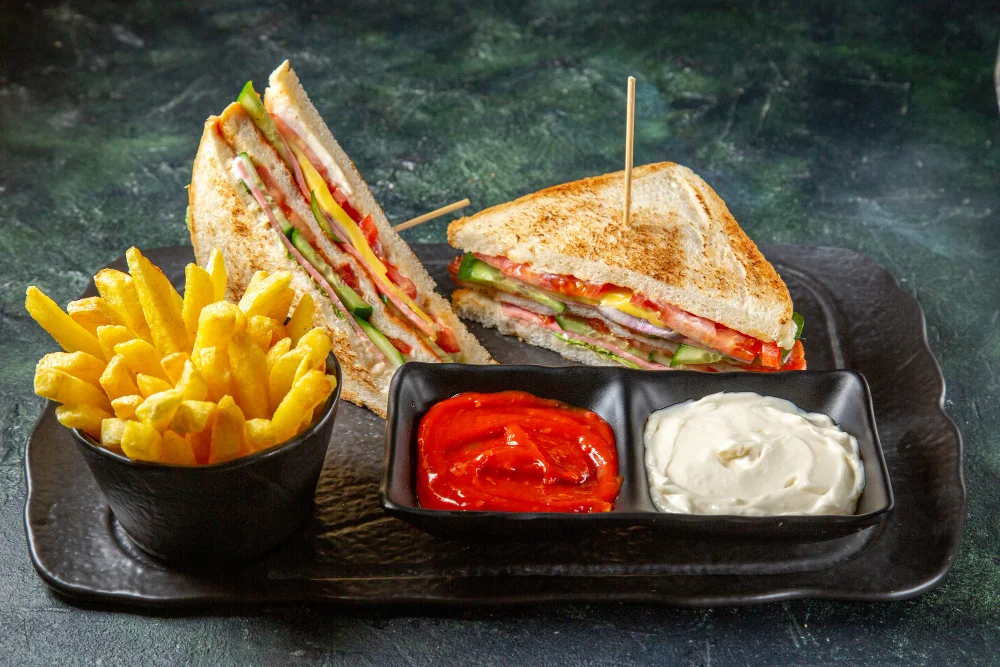American cuisine is a flavorful mosaic of cultures, reflecting the diversity and history of the United States. From regional specialties to globally inspired dishes, it has become a melting pot of traditions, tastes, and innovation. The roots of American cuisine trace back to Native American practices, influenced later by immigrants from Europe, Africa, Asia, and Latin America. This continuous blending has produced a cuisine that is dynamic, inclusive, and constantly evolving.
Today, American cuisine isn’t just about burgers and fries. It represents a deep variety of meals and cooking techniques spread across different regions. Whether it’s a Southern barbecue, New England clam chowder, or Tex-Mex enchiladas, every state adds its flavor to the country’s culinary identity.
Regional Specialties That Define American Cuisine
One of the most exciting aspects of American cuisine is its regional diversity. Each part of the country boasts its signature dishes that reflect local ingredients, traditions, and heritage. For example, the South is known for comfort foods like fried chicken and cornbread, while the Northeast is home to lobster rolls and chowders.
The Midwest, often called the “breadbasket” of America, offers hearty meals like casseroles and pot roast. On the West Coast, lighter and health-conscious foods, including sushi, avocado toast, and fresh salads, dominate menus.
Popular American Dishes by Meal Type

American cuisine caters to every meal with a variety of options. From comforting breakfasts to filling dinners and tasty snacks, there’s always something for every appetite.
Breakfast
- Pancakes with maple syrup – Fluffy pancakes topped with sweet maple syrup, perfect for a cozy morning start.
- Scrambled eggs with toast – Soft scrambled eggs served with crispy golden toast for a classic breakfast combo.
- Bagels with cream cheese – Freshly baked bagels spread with rich cream cheese, simple yet satisfying.
- Breakfast burritos – Tortilla wraps filled with eggs, cheese, and veggies for a hearty morning meal.
Lunch
- Club sandwiches – Triple-layered sandwiches packed with turkey, bacon, lettuce, and tomato.
- Grilled cheese with tomato soup – Gooey grilled cheese paired with warm tomato soup for a comforting lunch.
- Cobb salad – A filling salad with chicken, bacon, eggs, avocado, and blue cheese crumbles.
- Cheeseburgers – Juicy beef patties topped with melted cheese in a soft bun, a lunchtime favorite.
Dinner
- Roast turkey with mashed potatoes – Tender turkey slices served with creamy mashed potatoes and gravy.
- Barbecue ribs – Smoky, fall-off-the-bone ribs glazed with rich BBQ sauce.
- Meatloaf with green beans – Classic meatloaf served with a side of seasoned green beans.
- Macaroni and cheese – Pasta baked in a creamy cheese sauce, loved by all ages.
Snacks
- Popcorn – Light and crunchy, perfect for movie nights or mid-day munchies.
- Pretzels – Salty, twisted snacks that are great for quick nibbling.
- Nachos – Tortilla chips layered with melted cheese, jalapeños, and salsa.
- Peanut butter and jelly sandwiches – A sweet and savory treat made with creamy peanut butter and fruity jelly.
Classic Flavors with a Modern Twist
American cuisine has never been static. In recent years, chefs have embraced fusion cooking, blending traditional recipes with international flavors. Dishes like Korean tacos, buffalo cauliflower wings, and ramen burgers have entered mainstream menus. This experimentation shows how American cuisine evolves over time and with changing tastes.
What makes these innovations successful is their base in tradition. Even when ingredients change, the essence of comfort and familiarity remains a hallmark of American food.
Farm-to-Table Movement and Ingredient Integrity

The farm-to-table movement has reshaped how people perceive American cuisine. This approach focuses on sourcing fresh, local ingredients directly from farmers. It not only supports local agriculture but also ensures better flavor, nutrition, and environmental sustainability.
Key highlights of the farm-to-table movement:
- Encourages partnerships between restaurants and local farms
- Prioritizes seasonal fruits and vegetables
- Focuses on grass-fed, hormone-free meats
- Promotes the use of organic dairy and non-GMO grains
- Reduces environmental impact through lower food miles
- Enhances food transparency and consumer trust
American Cuisine in Urban vs. Rural Areas
There’s a significant difference in how food is experienced in urban and rural settings. In cities, people enjoy access to gourmet restaurants, global cuisines, and health-focused eateries. Urban cuisine often blends multiple cultural elements and emphasizes aesthetics.
In contrast, rural cuisine values simplicity and tradition. Meals are often home-cooked, rich in flavor, and deeply rooted in family customs. This contrast helps preserve both innovation and tradition within American food culture.
Influence of Immigrant Cultures on American Cuisine
Immigrants have played a central role in shaping American cuisine. Pizza, tacos, sushi, and pho are now just as American as hot dogs or apple pie. These dishes have become local staples while maintaining their cultural essence.
This cultural blend has also led to hybrid cuisines like Tex-Mex, a fusion of Texan and Mexican dishes, or Italian-American pasta creations. Each wave of immigrants brings new ingredients, techniques, and flavor profiles, adding depth to the national palate.
Dining Culture in American Cuisine

Dining in America ranges from fast food chains to Michelin-starred restaurants. While home cooking is cherished, dining out is also a significant part of social life. American restaurants cater to every budget and taste, offering everything from quick service to slow, experiential dining.
Key aspects of American dining culture:
- Wide range of restaurant options, from casual to fine dining
- Generous portion sizes compared to global standards
- Popular brunch culture on weekends
- Growing trend of gourmet food trucks in urban areas
- Frequent dining out for celebrations or socializing
Comfort Food and Emotional Connection to Meals
Comfort food plays a huge role in American cuisine. These are meals that evoke memories, offer warmth, and provide emotional satisfaction. Think of fried chicken, mashed potatoes, or a warm chocolate chip cookie. Such dishes provide more than nutrition; they deliver a sense of home.
This emotional connection drives the popularity of family-style meals and holiday traditions like Thanksgiving dinners and Fourth of July barbecues.
Health Trends in American Cuisine
Over the past decade, American cuisine has witnessed a shift toward health-conscious eating. There’s a growing interest in plant-based diets, low-carb meals, and gluten-free options. Smoothie bowls, quinoa salads, and oat milk lattes now appear regularly on menus.
While indulgent foods remain beloved, balance is key. People now seek nutrient-dense meals that don’t compromise on flavor or satisfaction.
Conclusion
American cuisine is a rich and diverse culinary landscape shaped by its history, culture, and global influences. From comforting classics like mac and cheese to innovative farm-to-table creations, it reflects both tradition and transformation. Each region offers unique flavors, making the cuisine as varied as the country itself.
As food trends continue to evolve, Americans are embracing healthier, locally sourced, and sustainable eating habits. The rise of organic farming, plant-based options, and conscious dining practices is reshaping the nation’s food identity. At the same time, fast food and comfort meals remain deeply rooted in American culture.
Whether it’s a hearty Southern breakfast, a fusion lunch in California, or a barbecue dinner in Texas, American cuisine offers something for every palate. It’s more than just food; it’s a reflection of lifestyle, heritage, and innovation that continues to grow and inspire around the world.










